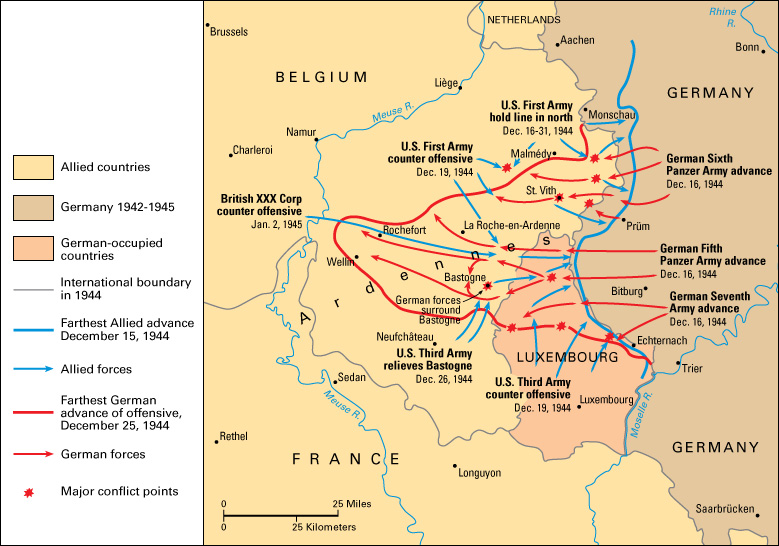Malmédy Massacre was the mass killing of United States prisoners of war and Belgian civilians by German troops during World War II (1939-1945). The killings took place in late 1944 around the town of Malmédy in eastern Belgium.
On Dec. 16, 1944, German troops attacked U.S. forces in the Ardennes Forest in Belgium and Luxembourg. The attack started what became known as the Battle of the Bulge. The battle was named for the bulging shape of the battleground on a map. On December 17, German troops surrounded soldiers of the U.S. Army 285th Field Artillery Observation Battalion near Malmédy. After a brief and bloody fight, about 100 U.S. soldiers surrendered to German Schutzstaffel (SS) troops under the command of Colonel Joachim Peiper. The SS was the elite Nazi Party guard.

The SS disarmed the U.S. prisoners, assembled them in a field, and shot them. A few prisoners survived, either by fleeing or playing dead. Over the next few days, SS troops killed several hundred more U.S. prisoners of war. The troops also killed Belgian civilians accused of aiding the Americans. News of the killings spread quickly. Some German prisoners were killed in retaliation.
After the war, the SS troops involved in the Malmédy Massacre stood trial for war crimes. Peiper and 42 of his men were sentenced to death. However, the sentences were later commuted (reduced). All the men, including Peiper, were released by the end of 1956. Years after his release, Peiper moved to France. There, he was murdered on July 14, 1976.
See also Bulge, Battle of the ; Schutzstaffel (SS) ; World War II .
